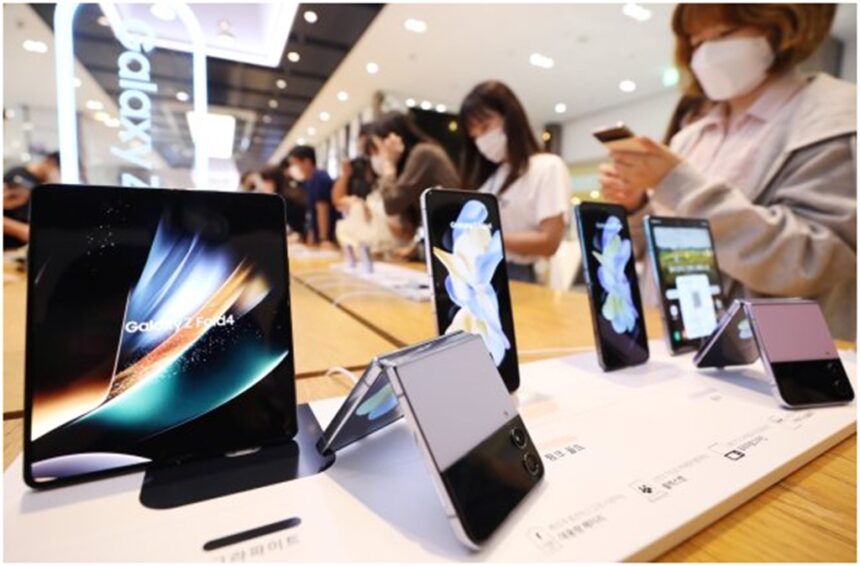BANGKOK – Visitors at the Thailand Mobile Expo 2025 looked over the latest devices, but foldable smartphones still make up only about 1.5% of total phone sales. Despite their small market share, brands see them as an important play for the high-end market.
Foldable phones in Thailand face several roadblocks. Their high price tags put off most buyers. Many apps and websites still aren’t tuned for foldable screens. There is also little demand from the wider public.
Still, these devices hold value for brands looking to win over premium buyers. Samsung is hoping to win back ground in this niche with its new Galaxy Z Fold7, as industry analysts point out.
Samsung’s latest models, the Fold7 and Flip7, are slimmer and lighter, countering the complaint that foldables are too bulky. While this design update is positive, experts like Sheng Win Chow from Canalys say that true progress now depends on features that go beyond just appearance.
Vendors are now focusing on software to stand out. Making better use of the foldable smartphone format, especially when paired with AI tools, could help with tasks like productivity and multitasking.
Thailand’s Smartphone Market
According to Canalys, Thailand’s smartphone market shipped 16.4 million units in 2024. Out of those, 34,542 were foldable models while 69,862 were flip phones. Standard bar-shaped phones still made up over 16.2 million units.
In the premium price band (over US$800), phone shipments rose to 2.7 million in Thailand in 2024, up from 2.4 million the year before. Bar phones in this segment grew by 1% to more than 2.6 million units, while foldable shipments dropped from 39,280 in 2023 to 34,542 in 2024.
Foldables are having trouble breaking out of their niche. High prices remain a key reason, even for wealthier buyers. The appeal isn’t quite strong enough for the mass market.
Samsung commands over 70% of Thailand’s foldable phone market, but its real goal is to make these devices more attractive to regular users, not just to stay ahead of rivals. Globally, foldable phone shipments reached 17.2 million units in 2024, up 12%. Yet Samsung’s global share fell from 54% to 45%.
Canalys expects flat global sales for foldable devices in 2025. High prices, little demand, and a lack of content suited for foldable screens all hold the market back, says research manager Jusy Hong.
IDC figures show that worldwide, foldable phone sales grew 4% in 2024 to 18.7 million units, bringing in $23.1 billion. Still, foldables only hold 1.5% of overall phone sales. Their average price is $1,234, about three times more than standard smartphones.
Apple Continues to Dominate
Apple holds 72% of the premium phone segment (over $800). But for ultra-premium models (over $1,600), Apple’s share dropped to 50%. Here, Samsung grabs 30% and Huawei 17%, mostly thanks to their foldable options.
Samsung led the way with foldables when it launched its first model in 2019, holding more than 80% of the market until 2023. Since then, competition has grown as Chinese brands rolled out thinner and lighter models that buyers preferred.
Samsung’s foldable market share dropped from 56% in 2023 to 34% in 2024 as these rivals gained ground.
Even though more brands are entering the foldable space, the segment still struggles with high costs, questions about durability, and limited access to some of the top models from Samsung’s competitors.
The latest Galaxy Fold7 gives Samsung a chance to spark new interest in folding phones. Better size, less weight, and a larger display are direct answers to user concerns about bulky designs.
Kiranjeet Kaur from IDC notes that foldables make up less than 1% of Thailand’s phone market, with Samsung at a 77% share last year. Oppo gained 41% of the market in the year’s first quarter.
She adds that while the premium segment in Thailand remains strong, the main challenge for foldables is attracting new users outside of their current base.














